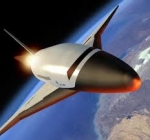Displaying items by tag: DLR
Gossamer Deorbiter Sail
Gossamer Deorbiter Sail: The purpose of this project is to develop a gossamer sail system that can be used for deorbiting satellites at end-of-life.
The principle that the system will use to achieve deorbiting is aerodynamic drag from the larger surface area. The system is intended mainly for low Earth orbit (LEO) telecom satellites but can potentially also be used in higher orbits, making use of solar radiation pressure to perform end-of-life manoeuvres.
A first demonstrator has been developed and tested by SSC in 2013 (see demonstrator page here).
Since there were many unfinished or failed attempts to prove that solar sailing is operational, ESA and DLR decided to start the collaborative Gossamer project. When all three steps of the Gossamer roadmap have successfully been completed, the solar sail propulsion will be declared operational and can be used in space mission. To ensure that Gossamer will not fail, ESA and DLR concentrate on a pure technological demonstrator mission with increasing complexity and level of difficulty in the three steps. Moreover, any scientific payload will be abandoned. It shall also be secured, that all Gossamer technologies are scalable. To avoid a failure in material or technologies, only those are used which have previously been proved and tested in numerous studies and projects. Finally, the Gossamer project and its technological success shall be perfectly documented and communicated to potential users.
The projected roadmap of DLR-ESA Gossamer contains three stages:
- Gossamer-1: launch in 2013: Demonstration of the safe deployment of a 5m x 5m solar sail in a 320km Earth orbit.
- Gossamer-2: launch in 2014: Deployment of a 20m x 20m solar sail in a 500km Earth orbit. Mass of 57 kg (inclusive margin) and container volume 50x50x60cm3 inside the rocking fairing. Test of a limited orbit and attitude control. The scheduled lifetime is about four weeks.
- Gossamer-3: launch in 2015: Deployment of a 50m x 50m solar sail in a > 10.000km Earth orbit. Mass of about 80kg and container volume 100x100x100cm3. Test of the full orbit and attitude control.
SpaceLiner
The SpaceLiner is a hypersonic suborbital spaceplane concept initiated by the German Aerospace Center (DLR) in 2005 and supported by the EU under the European Space Agency's (ESA) FAST 20XX program since December 2009.
The SpaceLiner is designed to be a reusable vehicle consisting of two stages: the booster and the space-plane itself. Both stages are propelled by LOx/LH2 rocket engines. The SpaceLiner lift-off is vertical (much like the Space Shuttle), powered by the combined thrust of the booster and the space-plane rocket engines. After the booster separation and engine cut-off, the space-plane behaves like a glider, skipping along the high layers of the atmosphere and ostensibly allowing for ultra-fast point-to-point travel. The SpaceLiner is designed to transport 50 passengers from Australia to Europe in 90 minutes or 100 passengers from Europe to California in 60 minutes.
DLR Institute of Planetary Research
the Institute of Planetary Research carries out and supports research programs on the internal structure, formation and evolution of the planets, their moons, and asteroids and comets.
Techniques employed include remote sensing and in-situ investigations using instruments carried on spacecraft, astronomical observations from the ground, theoretical modeling, and laboratory experiments.
It is DLR entity.
DLR
The German Aerospace Center (DLR) (German: Deutsches Zentrum für Luft- und Raumfahrt e.V.) is the national centre for aerospace, energy and transportation research of the Federal Republic of Germany. It has multiple locations throughout Germany. Its headquarters are located in Cologne. It is engaged in a wide range of research and development projects in national and international partnerships.
In addition to conducting its own research projects, DLR also acts as the German space agency. As such, it is responsible for planning and implementing the German space programme on behalf of the German federal government. As project management agency, DLR also coordinates and answers for the technical and organisational implementation of projects funded by a number of German federal ministries.




